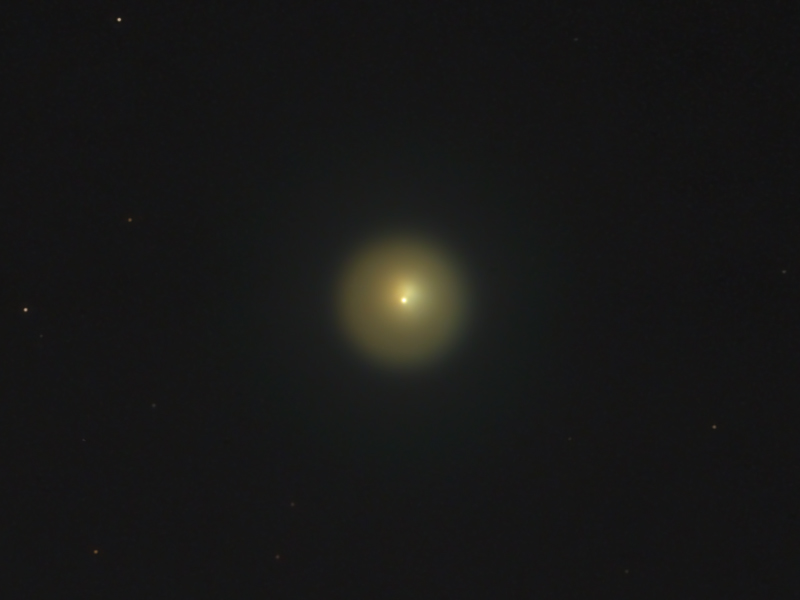Credit & Copyright: Igor Chekalin
Explanation:
What's happened to Comet Holmes?
A normally docile comet discovered over 100 years ago,
Comet 17P/Holmes
suddenly became nearly one million times brighter last week,
possibly over just a few hours.
In astronomical terms, the comet brightened from
magnitude 17, only visible through a good telescope, to magnitude 3, becoming
visible with the unaided eye.
Comet Holmes
had already passed its closest to the Sun in 2007 May outside the orbit of Mars
and was
heading back out
near Jupiter's orbit when the outburst occurred.
The comet's sudden brightening is likely due to some sort of sunlight-reflecting
outgassing event, possibly related to ice melting over
a gas-filled cavern, or possibly even a partial breakup of the comet's nucleus.
Pictured above
through a small telescope last Thursday,
Comet Holmes appeared as a fuzzy yellow spot,
significantly larger in angular size than Earth-atmosphere
blurred distant stars.
Although
Comet Holmes' orbit will
place it
in northern hemisphere skies for the next two years,
whether it will best be viewed through a
telescope or
sunglasses remains unknown.
1999 2000 2001 2002 2003 2004 2005 2006 2007 2008 2009 2010 2011 2012 2013 2014 2015 2016 2017 2018 2019 2020 2021 2022 2023 2024 2025 |
Yanvar' Fevral' Mart Aprel' Mai Iyun' Iyul' Avgust Sentyabr' Oktyabr' Noyabr' Dekabr' |
NASA Web Site Statements, Warnings, and Disclaimers
NASA Official: Jay Norris. Specific rights apply.
A service of: LHEA at NASA / GSFC
& Michigan Tech. U.
|
Publikacii s klyuchevymi slovami:
comet - komety - vspyshki
Publikacii so slovami: comet - komety - vspyshki | |
Sm. takzhe:
Vse publikacii na tu zhe temu >> | |
